This seems to be a silly question, but the fact is that when I tried to search for related information, none of the search results gave me satisfactory answer.
Logic Gates with 1-bit Input and 1-bit Output
Since the input has \$B=1\$ bit, the truth table has \$C=2^B=2^1=2\$ rows. Since for every row in the truth table, there are \$2\$ choices (\$0\$ or \$1\$) for the output, there are \$2^C=2^{2^B}=2^{2^1}=4\$ different truth tables in total.
Here is a table of truth tables (each truth table is written as a row):
$$ \begin{array}{|c|c|c|c|} \hline (0) & (1) & \text{Name} & \text{Formula} \\ \hline 0 & 0 & \text{Constant Zero} & 0 \\ \hline 0 & 1 & \text{Identity} & X \\ \hline 1 & 0 & \text{NOT Gate / Negate / Invertor} & \overline{X} \\ \hline 1 & 1 & \text{Constant One} & 1 \\ \hline \end{array} $$
Logic Gates with 2-bit Input and 1-bit Output
Since the input has \$B=2\$ bits, the truth table has \$C=2^B=2^2=4\$ rows. Since for every row in the truth table, there are \$2\$ choices (\$0\$ or \$1\$) for the output, there are \$2^C=2^{2^B}=2^{2^2}=16\$ different truth tables in total.
Here is a table of truth tables (each truth table is written as a row):
$$ \begin{array}{|c|c|c|c|c|c|} \hline (0,0) & (0,1) & (1,0) & (1,1) & \text{Name} & \text{Formula} \\ \hline 0 & 0 & 0 & 0 & \text{Constant Zero} & 0 \\ \hline 0 & 0 & 0 & 1 & \text{AND Gate} & XY \\ \hline 0 & 0 & 1 & 0 & \color{red}{\text{Gate-0010}} & X\overline{Y} \\ \hline 0 & 0 & 1 & 1 & \text{Identity on X} & X \\ \hline 0 & 1 & 0 & 0 & \color{red}{\text{Gate-0100}} & \overline{X}Y \\ \hline 0 & 1 & 0 & 1 & \text{Identity on Y} & Y \\ \hline 0 & 1 & 1 & 0 & \text{XOR Gate} & X \oplus Y \\ \hline 0 & 1 & 1 & 1 & \text{OR Gate} & X + Y \\ \hline 1 & 0 & 0 & 0 & \text{NOR Gate} & \overline{X + Y} \\ \hline 1 & 0 & 0 & 1 & \text{XNOR Gate} & \overline{X \oplus Y} \\ \hline 1 & 0 & 1 & 0 & \text{NOT Gate on Y} & \overline{Y} \\ \hline 1 & 0 & 1 & 1 & \color{red}{\text{Gate-1011}} & X + \overline{Y} \\ \hline 1 & 1 & 0 & 0 & \text{NOT Gate on X} & \overline{X} \\ \hline 1 & 1 & 0 & 1 & \color{red}{\text{Gate-1101}} & \overline{X} + Y \\ \hline 1 & 1 & 1 & 0 & \text{NAND Gate} & \overline{XY} \\ \hline 1 & 1 & 1 & 1 & \text{Constant One} & 1 \\ \hline \end{array} $$
Questions
- What are other names for these gates? As shown above, the
NOT Gateis also called theNegatefunction, or theInverter. - From my research, I know that the name XNOR Gate is more popular than NXOR Gate. However, the gate is equivalent to a NOT XOR Gate . Why does the X come before the N then (unlike other "NOT something" gates)?
- Are there widely used names for the gates marked \$\color{red}{\text{red}}\$ above?
- In this question, \$\color{red}{\text{Gate-0100}}\$ is also called SAND Gate, which stands for "Single-inversion AND Gate". However, I am not sure if this is widely used in the field.
- In this answer, \$\color{red}{\text{Gate-1011}}\$ (in fact, it is a "NOT SAND" Gate) is called Inclusion Gate or IF-THEN Gate. Again, is there a proper name for this gate? How do IC user manuals refer to a gate with the same truth table?
- In this reference, \$\color{red}{\text{Gate-1011}}\$ is called Logical Implication.
== Edited: 2019-04-10 ==
I just found this Wikipedia article by chance, which names all 16 gates (operations).
